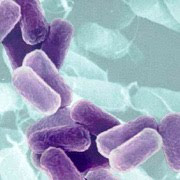
Men with high blood pressure who smoke are 26 times more likely to have erectile dysfunction --impotence -- than nonsmokers, John Spangler, M.D., M.P.H., of Wake Forest University Baptist Medical Center told the American Society of Hypertension May 19 in San Francisco.
Erectile dysfunction, or impotence, is the inability of a man to achieve an erection or to complete intercourse, he said, and affects an estimated 30 million Americans.
"These data are the first to quantify a 26-fold increase in erectile dysfunction among primary care men with hypertension who also currently smoke, a rate that is also twice that of former smokers," said Spangler, associate professor of family and community medicine.
He said the study showed that former smokers among patients with high blood pressure are 11 times more likely to be impotent than non-smokers.
"Cigarette smoking, hypertension and erectile dysfunction are common disorders in primary care, and informing men who smoke of the exceptionally high possibility of developing erectile dysfunction may motivate many to quit their tobacco habit."
Spangler said that cigarette smoking and impotence had been linked previously by other investigators, including finding what doctors call a dose response relationship: the more cigarettes smoked per day the greater the chance of impotence.
But most of these earlier studies looked at a highly selective group of patients going to urology or cardiology clinics, he said. "This is the first study that looked at a primary care population and is more reflective of the general population."
Spangler said smoking has "both acute and chronic effects on erectile physiology." In both human and animal studies, smoking inhibits the ability to achieve a full erection.
Smoking also is known to accelerate atherosclerosis -- hardening of the arteries-- and when the blood vessels in the pelvis area are narrowed, that contributes to reduced penile blood flow.
"A smoking history should be obtained from all patients, especially those who report erectile dysfunction," Spangler recommended, "Informing men who smoke about the exceptionally high likelihood of developing erectile dysfunction should become a standard part of care of these patients." Spangler said the research team was surprised that there was no relationship between stress and impotence, but noted that the small size of the study -- 59 patients -- may have limited the chance to detect differences. The smoker versus nonsmoker difference, however, was dramatic.
"It may be that cigarette smoking and high blood pressure are such powerful risk factors for impotence that it just overshadows stress," he said.
The study was supported in part by a cooperative agreement from the Centers for Disease Control and Prevention. The team, in addition to Spangler, include John H. Summerson, M.S., Joseph C. Konen, M.D., M.S.P.H., and Ronny A. Bell, Ph.D. Konen is now at the Department of Family Medicine at Carolinas Medical Center in Charlotte.
Source: Science Daily
















